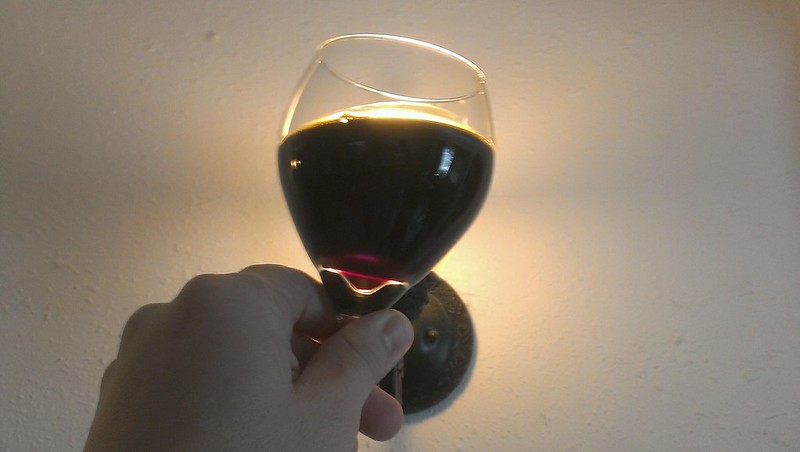Here's a glass from the bochet I posted about on post #258.
~15 months, not too shabby. I tried to get a shot in front of the sun, but the camera wasn't happy with me... no light penetrated it.

I had a little wine tasting with 25 people attending, the bochet was one of 6 meads I had for everyone to try, and it came in a very close second behind a raspberry vanilla melomel. Most of the people who really like it didn't drink a whole lot, preferring to sip it and enjoy all the various flavors. 1-2 glasses each is all.
I'm going to do this one again, but I'm not going to use a blend of honey... just some of the wildflower honey from my own hives. I'm also going to take it off the heat and cool it the split second it turns black. Last time I let it boil for a while longer. I've got a gallon of the first batch left which I'll leave to age for another year or so. There's almost a bite to this before the sweetness and marshmallow and toffee come to you. I'd like to see if that calms down a bit, or if it's a matter of technique. If that's the case, I'll know in a year or so when my next batch is ready to drink.

Of all my wine tasting friends, exactly zero of them have even heard of Bochet before. I like that this tends to be kind of an oddball to folks outside of the mead world, and you just can't beat that jet black color in the glass. I'm going to keep some of this on hand at all times.












![Craft A Brew - Safale S-04 Dry Yeast - Fermentis - English Ale Dry Yeast - For English and American Ales and Hard Apple Ciders - Ingredients for Home Brewing - Beer Making Supplies - [1 Pack]](https://m.media-amazon.com/images/I/41fVGNh6JfL._SL500_.jpg)



















































